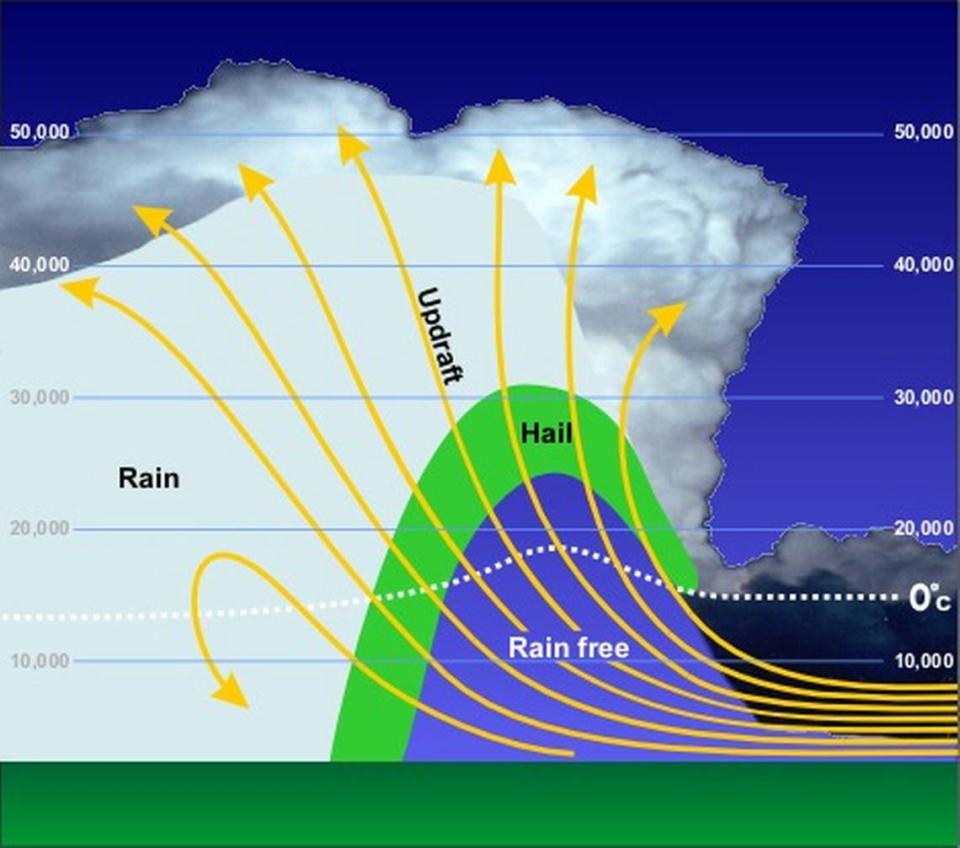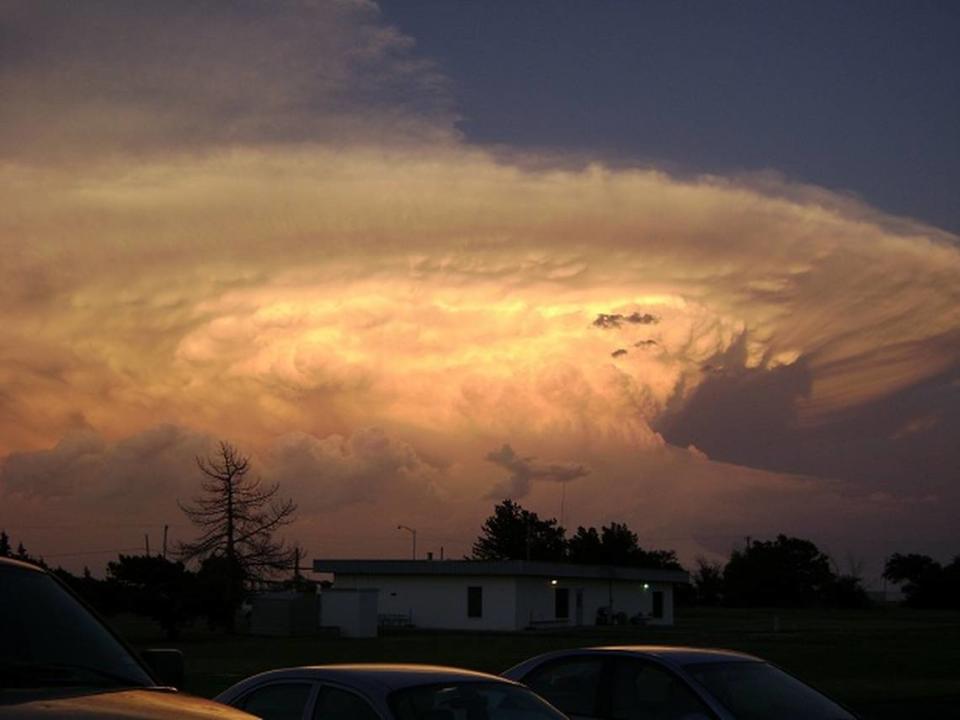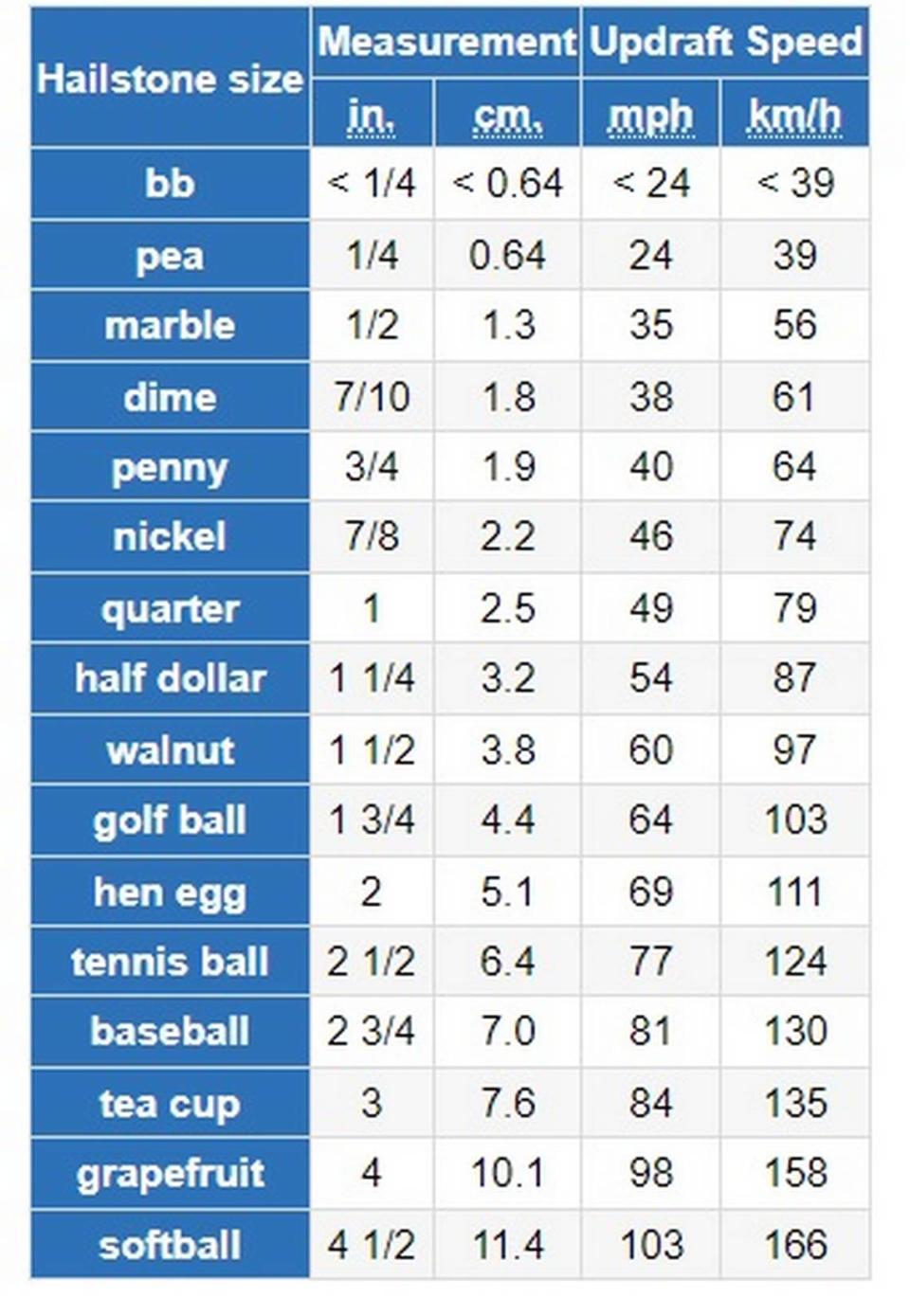Did you see all that hail in Florida? What to know about the cause of freaky storm
Florida has had a run of severe storms in April.
You may have heard of the supercell thunderstorm that dumped nearly 26 inches of rain on Fort Lauderdale and soaked most of Miami-Dade on April 12.
And on Wednesday, you may have seen photos of the damage left from ball-sized hail that, along with strong winds, dented cars, downed trees and even destroyed some roofs and houses in Melbourne and other parts of Brevard County. Golf ball-sized hail was reported in Palm Beach Gardens, Sumter, Marion, Lake and Osceola counties.
SEE MORE: Photos, videos of destructive hail pounding cars and homes across Florida
The forecast into the weekend, suggests Florida may not have seen the end of hail just yet.
Here are some things to know about hail:
How is hail made?

KNOW MORE: Thunderstorm hazards, the science of hail explained
▪ Hail is precipitation — water that falls from clouds — that is thrust upward, or updrafted, into extremely cold areas of the atmosphere during some thunderstorms, according to the weather service.
▪ Hailstones grow by colliding with “supercooled” water drops — liquid drops that are surrounded by air that is below freezing, which commonly happens in thunderstorms.
“The stronger the updraft the larger the hailstone can grow. In all cases, the hail falls when the thunderstorm’s updraft can no longer support the weight of the ice,” the weather service explains.
Given the largest wind gust measured in Palm Beach County on Wednesday — about 59 mph, according to Larry Kelly of the National Weather Service in Miami — and the size of the hail, it’s little wonder meteorologists and residents with damaged homes and cars flooded social media with photos and then hit auto body shops on Thursday in parts of Florida to seek repairs, Fox 35 Orlando reported.
Local auto body shops are swamped with cars coming in, damaged by hail. They’re forecasting they’ll be busy for months dealing with damage, even bringing in dent repair experts from TX. We’re expecting more severe weather + @fox35orlando is looking into ways to protect your car. pic.twitter.com/B7niPMKSgB
— Esther Bower (@estherbower_tv) April 27, 2023
Severe storm damage here in Melbourne. Parts of this roof caved in during a hail storm. It’s a miracle no one inside was hurt. @fox35orlando is tracking severe weather across central Florida. pic.twitter.com/3O2qXqpVjS
— Esther Bower (@estherbower_tv) April 26, 2023
When is hail most common in Florida?
▪ April and May are the months when Florida can expect hail — just maybe not such huge pieces — Kelly told the Miami Herald.
“We still have some colder air aloft this time of year and we’re going to see increased moisture and thunderstorm development so this is usually the time of year that we do see hail,” Kelly said. “Now, it is a little rare to see those sizes down here in Florida. We were pretty cold aloft yesterday. So the stones were able to generate the bigger hail that we’re not used to seeing down here all the time.”

▪ Supercell thunderstorms can produce larger hail than multi-cell thunderstorms (the more common variety) because supercells can last for hours and the sustained updraft in supercells supports hail formation by repeatedly lifting the budding hailstones into the coldest air atop the thunderstorm cloud. The mature stage in the life cycle of the multi-cell is relatively short so the hailstones have less time to grow, according to the weather service.
Who gets more large hail than Florida?
Florida gets more thunderstorms, but New Mexico, Wyoming, Colorado and Texas tend to drop bigger hailstones — golf ball-sized (1 3/4 inch) and above. Softball-sized is the largest at 4 1/2 inches.
The reason we generally fall short of the supersized version of hail is the freezing level in the Florida thunderstorm is so high in the atmosphere, the hail often melts before reaching the ground, the weather service explains.
Hail sizes

Hail sizes range from the smallest designation, like a BB from a BB gun, at under a quarter of an inch, to the largest, a softball, which is a whopper at 4 1/2 inches.
Given the smaller size, a BB hailstone will hit the ground at less than 24 mph. That may nick the paint on your car.
“Severe hail begins around a quarter. That’s when you’re going to begin to see some potential damage,” Kelly said.
Even bigger hail can dent cars, take down tree limbs and, in the case of Wednesday’s Central Florida storms, damage houses. According to the weather center, a tornado in Fort Worth, Texas, killed a man when he was hit by a grapefruit-sized hailstone on March 28, 2000.
A grapefruit-sized hailstone is the penultimate size, 4 inches and can hit the ground at 98 mph.
A golf-ball sized hailstone, like that in Palm Beach County and other parts of Florida is 1 3/4 inch and hits the ground at 64 mph.
The message?
“In severe thunderstorm warnings we want you to take action during those warnings,” Kelly said. That’s why meteorologists note the potential size of hail with a particular storm and when hail is forecast at a quarter-size (1 inch) and up, the warnings will be more vocal.
Move things you don’t want to get damaged inside, when possible.
Stay inside during a hailstorm. Even little stones can hurt when they fall from the sky. And big ones, well ... the Fort Worth man.
And pay attention to the warnings, whether it’s through your phone or weather radio or following the weather service on social media.

